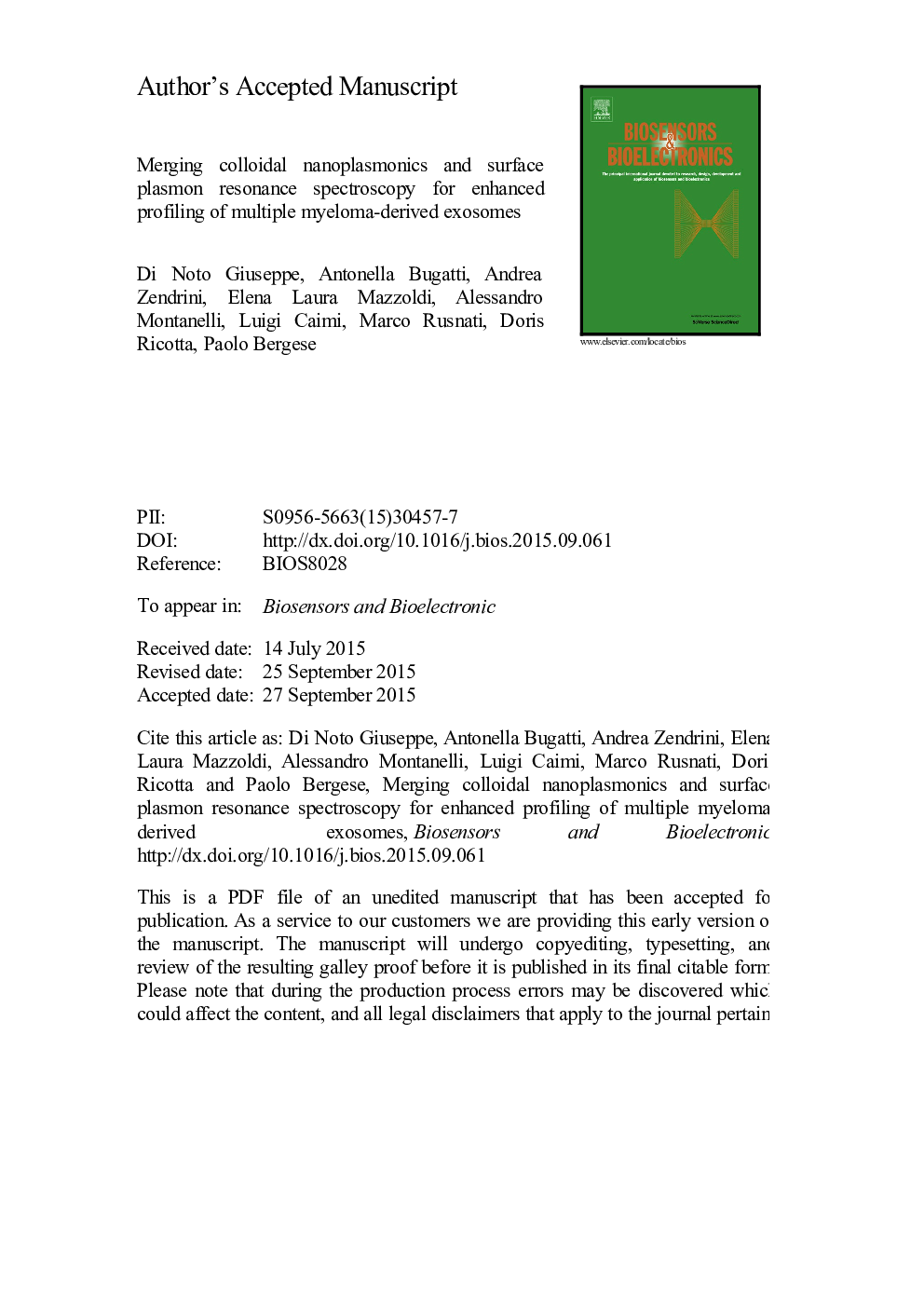| Article ID | Journal | Published Year | Pages | File Type |
|---|---|---|---|---|
| 7231570 | Biosensors and Bioelectronics | 2016 | 21 Pages |
Abstract
A novel approach for sorting exosomes from multiple myeloma (MM), monoclonal gammopathy of undetermined significance (MGUS) and healthy individuals is presented. The method is based on the combination of colloidal gold nanoplasmonics and surface plasmon resonance (SPR) biosensing and probes distinctive colloidal properties of MM-derived exosomes, such as molar concentration and cell membrane binding preferences. It allowed to discover that MM patients produce about four folds more exosomes than MGUS and healthy individuals. In addition, it showed that among the analyzed exosomes, only the MM-derived ones bind heparin - a structural analog of heparan sulfate proteoglycans known to mediate exosome endocytosis - with an apparent dissociation constant (Kd) equal to about 1Â nM, indicating a high affinity binding. This plasmonic method complements the classical biochemical profiling approach to exosomes, expanding the MM biomarker panel and adding biosensors to the toolbox to diagnose MM. It may find applications for other diseases and has wider interest for fundamental and translational research involving exosomes.
Related Topics
Physical Sciences and Engineering
Chemistry
Analytical Chemistry
Authors
Giuseppe Di Noto, Antonella Bugatti, Andrea Zendrini, Elena Laura Mazzoldi, Alessandro Montanelli, Luigi Caimi, Marco Rusnati, Doris Ricotta, Paolo Bergese,
